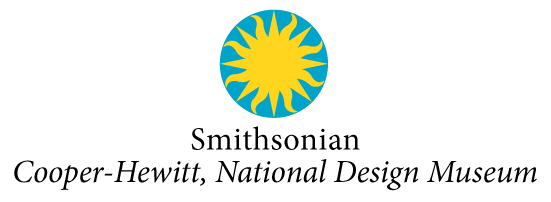Cooper-Hewitt Announces Winning Schools in Community Design Competition
The Smithsonian’s Cooper-Hewitt, National Design Museum and Ford Motor Co. Fund today announced three winners from a design competition challenging students to identify an opportunity in their community that could be solved using the design process. A jury of design leaders reviewed the student-driven design proposals and chose the first-, second- and third-place winners, whose schools will receive prize money to implement the design proposal during the 2011-2012 school year.
The competition was open to partner schools in Chicago, Miami, San Antonio and San Diego whose educators attended Cooper-Hewitt’s A City of Neighborhoods and Smithsonian Design Institute professional development programs, which train teachers to look at their community through the lens of design and bring that knowledge back to their classroom.
“This competition encourages teachers and students to think like designers and develop innovative design ideas that help serve their community,” said Caroline Payson, director of education at Cooper-Hewitt. “The proposals illustrate how design can be used as a vehicle for change and civic engagement.”
“Education is a top priority for Ford,” said Jim Vella, president of Ford Motor Co. Fund and Community Services. “We are pleased to support Cooper-Hewitt’s Community Design Competition and applaud its commitment to developing tomorrow’s innovative thinkers.”
The winning design proposals were chosen by a design jury composed of Charles Harrison, retired industrial designer at Sears, Roebuck & Co.; Ellen Lupton, curator of contemporary design, Cooper-Hewitt; Rebeca Méndez, professor, department of Design | Media Arts, UCLA; Cameron Sinclair, co-founder, Architecture for Humanity; and Lynn Quigley, manager, community relations, Ford Motor Co. Fund and Community Services.
The first-place winner, taking home a $5,000 prize, is the Henry Ford Academy: Alameda School of Art + Design in San Antonio. The ninth-grade class proposed a carry-all design for the homeless community at the Haven 4 Hope Transition Shelter, which is located one block away from the school. Students conducted research by visiting the shelter and interviewing various administrators and residents. The students brainstormed, prototyped and tested their ideas, which resulted in a design for a carry-all that includes multiple innovative elements, such as storage pockets for clean and dirty laundry, hidden key storage, a pocket for books and papers and a detachable pillow.
The second-place winner, scoring a $3,000 prize, is the Shenandoah Middle School Museums Magnet School in Miami. Four eighth-grade students proposed a Pet Waste Station to address a huge dog waste problem next to their school sidewalks. Their challenge was to inform area residents about the harmful effects of pet waste by distributing informational brochures and installing signs and waste disposal bins. The students began the process by calling their local community offices to learn about the proper procedures to install signage outside the area of the school grounds.
The third-place winner of a $1,000 prize is the Andrew Jackson Language Academy in Chicago for the school-wide proposal for a Kinder-Garden Memorial, honoring a kindergarten teacher who passed away. After creating a temporary memorial space in the school’s atrium with photos, drawings, cards and poems, the school community decided that a more permanent form of commemoration was necessary. Students brainstormed ideas and sketched their designs for a memorial garden to be constructed outside the kindergarten classroom. The final design proposal features a mosaic tile garden with depictions of the lifecycle of a butterfly, the anatomy of an insect’s body and a representation of the four seasons—all concepts taught in the kindergarten curriculum.
Smithsonian Design Institute is made possible by Ford Motor Co. Fund.
Additional support provided by Alice Gottesman, the Lily Auchincloss Foundation Inc., Enid and Lester Morse, the Rita J. and Stanley H. Kaplan Family Foundation Inc. and Scott Kaplan Belsky.
Education programs at Cooper-Hewitt, National Design Museum are made possible in part by the Alan and Katherine Stroock Fund.
About Cooper-Hewitt’s Professional Development Programs
Cooper-Hewitt’s education programs provide teachers with the resources to impart essential 21st-century skills, such as critical thinking, visual literacy, teamwork and problem solving. Participants learn about the design process before returning to their schools, where they incorporate this content into their lesson plans and curricula. All lesson plans are posted on Cooper-Hewitt’s online Educator Resource Center (www.educatorresourcecenter.org), where they are accessible to educators around the world. The site features more than 400 lesson plans aligned to national and state standards that demonstrate how the design process can enhance the teaching of all subjects and features discussion boards that provide a forum for educators to exchange ideas.
About the Smithsonian’s Cooper-Hewitt, National Design Museum
Cooper-Hewitt is the only museum in the nation devoted exclusively to historic and contemporary design. Founded in 1897, the museum has been a branch of the Smithsonian since 1967. The museum presents compelling perspectives on the impact of design on daily life through active educational programs, exhibitions and publications.
# # #
SI-236-2011

